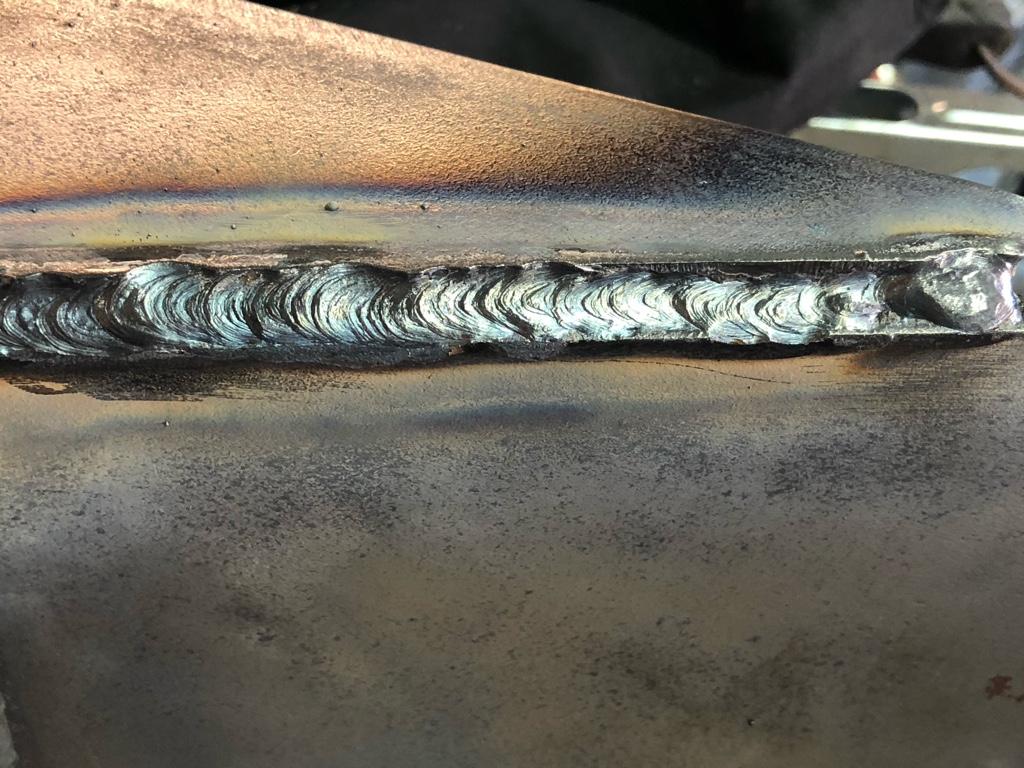Step-by-Step Guide to Preventing Weld Undercut in Different Metals
Step-by-Step Guide to Preventing Weld Undercut in Different Metals
Blog Article
Essential Tips for Welders: Avoiding Undercut Welding and Ensuring Stronger Weld Joints
In the world of welding, attaining resilient and strong weld joints is the cornerstone of generating high-grade job. One typical challenge that welders frequently encounter is undercut welding, which can endanger the stability of the weld joint.

Comprehending Undercut Welding
Undercut welding is a common welding flaw that occurs when the weld steel fails to appropriately fill the groove and leads to a groove-like clinical depression along the weld bead. This issue compromises the weld joint, making it at risk to splitting and failure under tension. Damaging can be brought on by different factors, including too much welding current, high welding speed, incorrect electrode angle, wrong electrode size, and bad welding strategy.
Among the main reasons for undercut welding is an inequality in between the welding current and the welding speed. If the welding current is expensive or the welding rate is too quick, the weld steel might not adequately fill the groove, causing damaging. Additionally, using an electrode that is as well big can cause a comparable end result, as the excess metal can not properly stream into the groove.
To avoid undercut welding, welders need to guarantee they are using the appropriate welding specifications, preserve an appropriate electrode angle, select the proper electrode dimension, and technique correct welding strategies. By addressing these factors, welders can minimize the risk of undercutting and create more powerful, more dependable weld joints.
Proper Welding Technique
Reliable welding method plays an important role in ensuring the top quality and stability of weld joints. One fundamental facet of appropriate welding strategy is preserving the appropriate angle and range between the welding weapon and the workpiece.
Additionally, a constant and stable hand movement is necessary for developing strong and long lasting weld joints. Welders should go for smooth, uniform motions to ensure even circulation of the weld material. Correct control of the welding weapon and filler material is additionally essential to attaining optimal infiltration and fusion.
Moreover, controlling the warm input and selecting the proper welding criteria based on the product being bonded are vital consider accomplishing high-quality welds - Preventing weld undercut. Welders must adhere to the recommended setups offered by welding treatment requirements and adjust them as needed based upon the specific demands of the job. By understanding proper welding methods, welders can dramatically enhance the stamina and integrity of their weld joints
Picking the Right Electrode
When considering the significance of selecting the ideal electrode in welding applications,Keeping the proper angle and range in between the welding weapon and the work surface is basic. The selection of electrode plays an essential role in identifying the high quality and stamina of the weld joint. Electrodes are available in different kinds, each created for certain functions and products.
First of all, choosing the suitable electrode diameter is vital. Thinner electrodes appropriate for welding thin materials, while thicker electrodes are better for thicker products and greater warmth applications. Matching the electrode diameter to the thickness of the work surface aids attain a well balanced weld.
Secondly, comprehending the material composition of the electrode is important. Different electrodes are designed for welding specific products like steel, stainless-steel, light weight aluminum, or cast iron. Utilizing the appropriate electrode material ensures good blend and decreases the danger of flaws in the weld.
Finally, thinking about the welding position and technique is crucial when picking the electrode kind. For instance, certain electrodes are much better matched for above or upright welding positions, while others work well for flat or straight placements. Selecting the ideal electrode based on the welding technique boosts the overall weld top quality and stability.
Preparing the Base Metal
To ensure a successful welding procedure, what initial steps should be taken when preparing the base steel for welding? Additionally, any existing weld product or deposit from previous welding should be eliminated the original source to make sure a tidy surface for the new weld.

Conducting Post-Weld Inspections

After performing these analyses, welders need to contrast the results against industry criteria and task demands to make sure that the weld joint satisfies all required criteria. Any kind of inadequacies or discrepancies discovered throughout the post-weld assessment must be quickly addressed via proper restorative steps to assure the weld's honesty. By vigilantly performing post-weld examinations and immediately dealing with any concerns, welders can support the quality and integrity of their work, inevitably adding to the safety and long life of the welded frameworks.
Conclusion

Finally, preventing undercut welding and making certain stronger weld joints call for a combination of correct welding strategy, picking the best electrode, preparing the base steel properly, and performing post-weld evaluations. By recognizing the causes of undercut welding and applying the required preventative measures, welders can produce high-grade weld joints that meet sector standards and guarantee the architectural integrity of the welded parts.
Undercut welding is an usual welding problem that takes place when the weld steel fails to appropriately fill the groove and results in a groove-like anxiety along the weld grain (Preventing weld undercut). Damaging can be caused by various aspects, consisting of excessive welding present, high welding rate, inappropriate electrode angle, incorrect electrode size, and bad welding strategy
One of the major reasons for undercut welding is a discrepancy in between the welding existing and the welding rate. If the welding current is as well high or the welding rate is as well fast, the weld metal might not sufficiently load the groove, leading to damaging.Maintaining the Discover More Here appropriate angle and distance between the welding weapon and the work surface is basic when taking into consideration the importance of choosing the best electrode in welding applications.
Report this page